New Delhi: India has witnessed numerous droughts and resulting socio-economic hardships during the last century. Some of these were mitigated as the country modernised, but in the last few years, large swathes of land have fallen prey to water shortages, especially drinking water.
The biggest and most recent example of this is the southern metropolis of Chennai, which has been reeling under a water crisis for months.
According to NASA, the dry conditions have been further exacerbated due to heat waves in May and June this year, with 10 June 2019 being the hottest day across India. And what’s worse, the monsoon is delayed this year, so there is no relief in sight either.
ThePrint takes a look at five major cities that are in trouble, with their rain-fed water sources having dried up.
Chennai
The capital of Tamil Nadu and the sixth largest city in India is likely to run out of water by 2020. A NITI Aayog study confirmed that Chennai faces extreme water stress.
Satellite images from the same day one year apart — 15 June 2018 and 2019 — are proof of the trouble. The water level in the Puzhal Aeri, a rain-fed lake that contributes to the supply of drinking water to the city, presents a stark contrast.
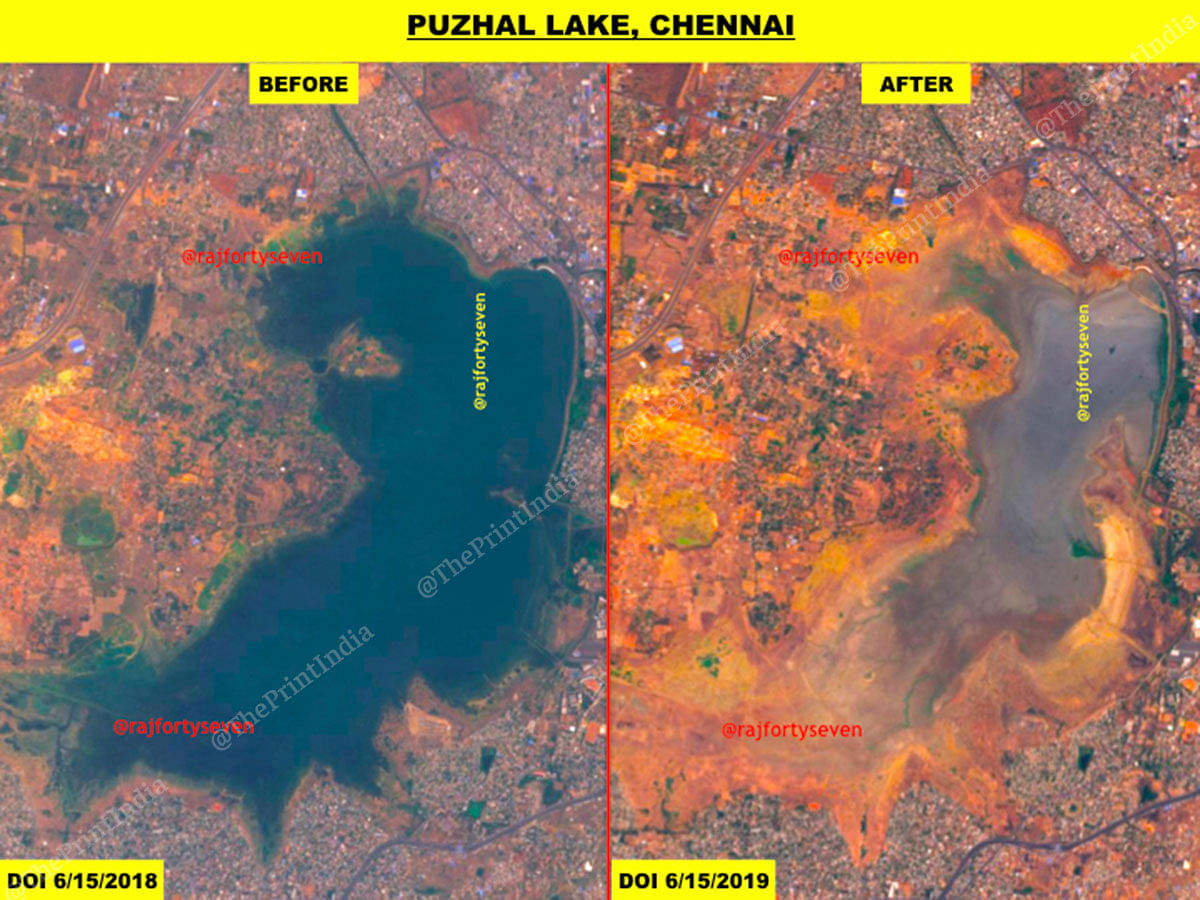
The water body, also known as Red Hills Lake, is located in the north-western part of Chennai, spread over 1,800 hectares. It can contain almost 360 billion litres of water at an average depth of 20m. But this year, only 360 hectares are under water, and that too at a shallow depth.
Also read: Kejriwal on Delhi water crisis — Everything can’t be done in the first year itself
Bhopal
The central Indian city of Bhopal falls in the heat-wave belt, and its water levels have depleted unusually fast, possibly due to improper water management.
The Bhojtal, earlier known as Upper Lake, is one the major sources of water for the city. The lake is spread over 2,400 hectares, and can hold more than 360 billion litres of water at an approximate average depth of 15m.
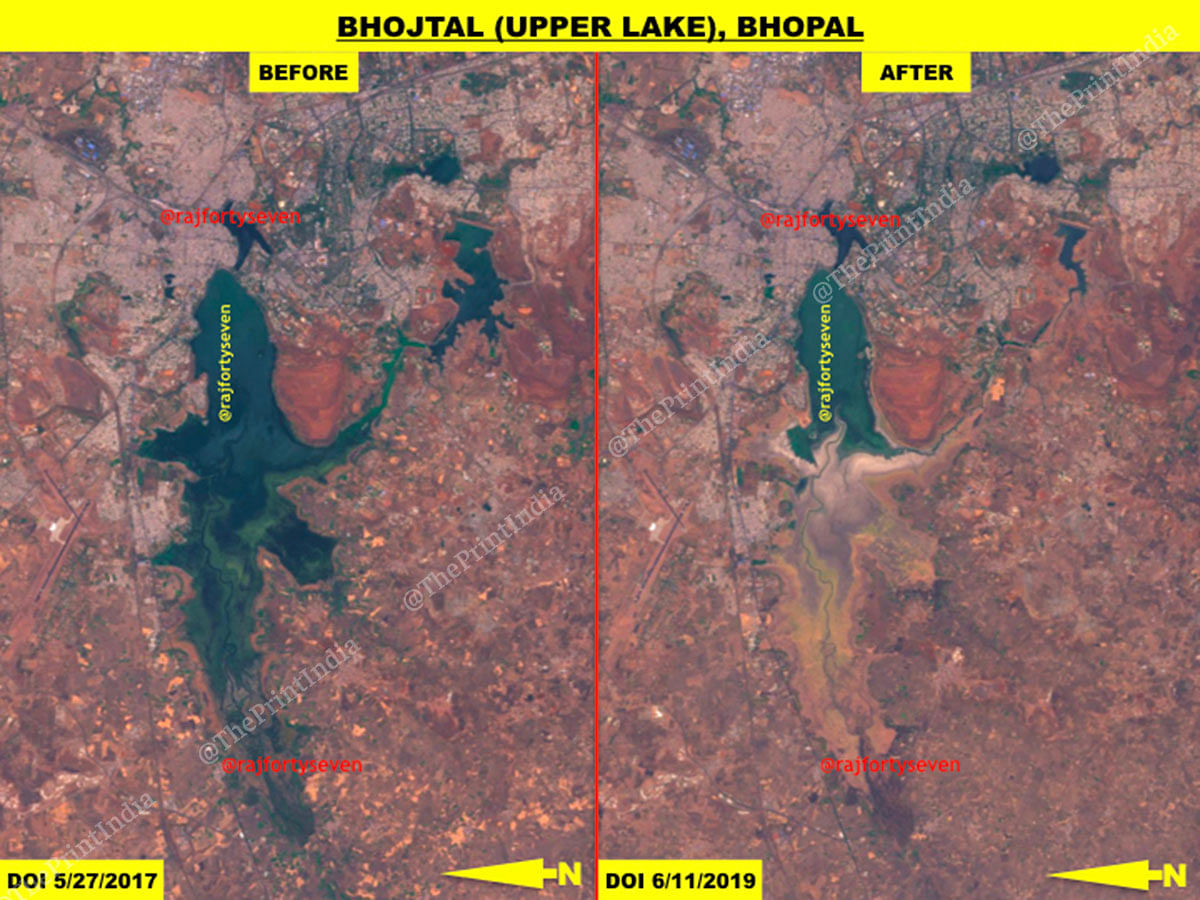
But satellite images taken in May 2017 and June 2019 show the alarming difference in water levels of the lake — now, it barely covers 700 hectares.
Also read: Chennai’s water crisis is only getting worse, and there’s no relief in sight
Latur
Latur lies in Maharashtra’s Marathwada region, which is one of India’s thirstiest regions every year.
And yet, images of the rain-fed Kava Lake from June 2018 and 2019 show just how bad the situation has been allowed to get, thanks to improper water management and conservation.
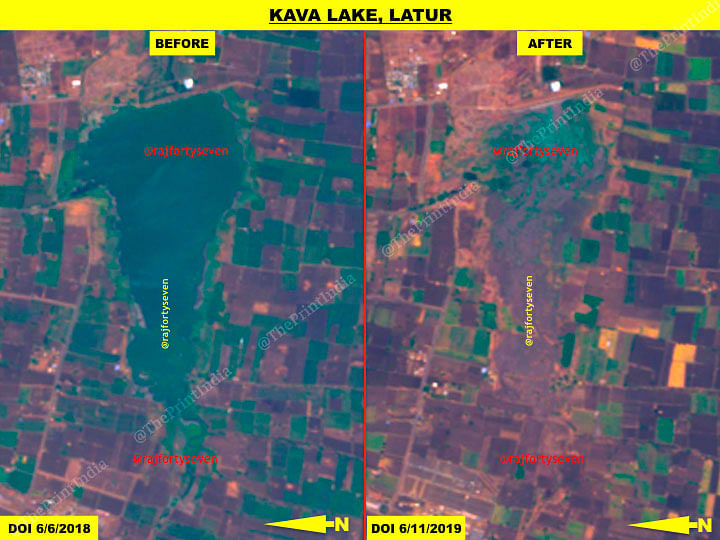
The lake, covering 80 hectares, has dried up completely, and the only option for the citizens to quench their thirst is water delivered by trains.
Bengaluru
Unlike the other lakes considered for this report, Bengaluru’s largest lake, Bellandur, is part of the city’s drainage system. However, it is also the most infamous of all these lakes, having caught fire in 2015 and 2018.
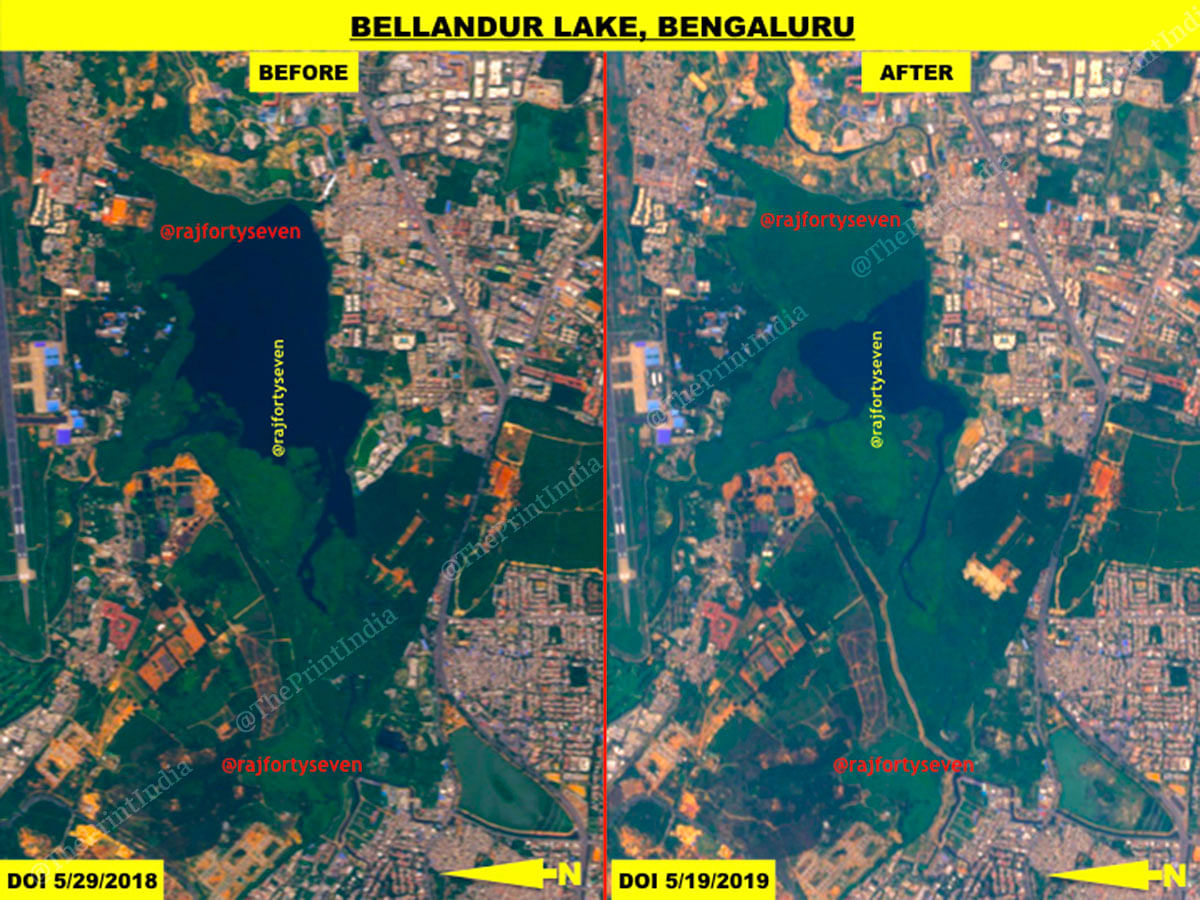
Satellite imagery from 2001 onwards indicates how encroachment has reduced Bellandur Lake in size every year. It used to cover over 1,000 hectares, but is now down to about 40 hectares.
Also read: Modi govt’s big water push in Budget 2019: Rs 8245 crore for Jal Shakti ministry



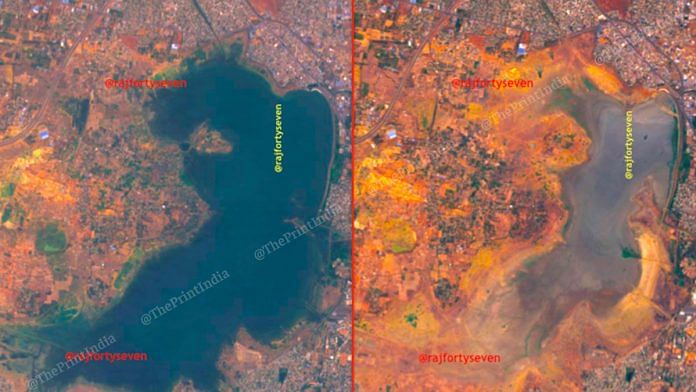



A good officer of Modi and Shah duo who had been appointed in place of Aloke Verma , is being falsely implicated.Dont worry Mr Rao ,they will try their best to prove you as honest as the Duo.